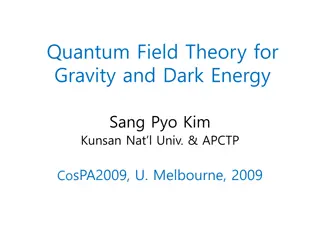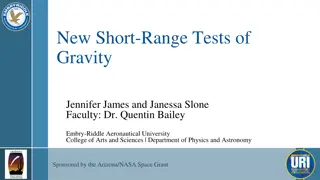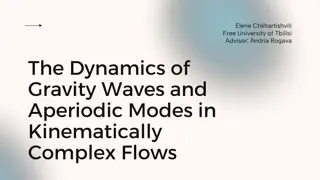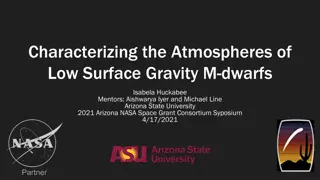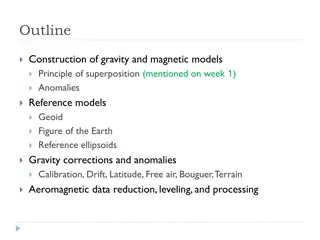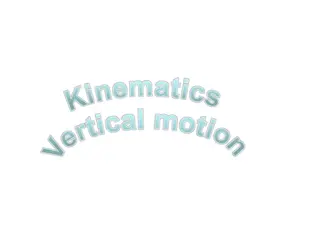Insights into Dark Energy Detection and Gravity Tests
This collaboration delves into direct detection of dark energy, evidencing acceleration in expansion and delving into the evolution of background cosmology. Gravity tests, including solar system trials, are discussed, along with models like f(R) gravity and chameleon screening in the context of scalar-tensor theories.
Download Presentation

Please find below an Image/Link to download the presentation.
The content on the website is provided AS IS for your information and personal use only. It may not be sold, licensed, or shared on other websites without obtaining consent from the author.If you encounter any issues during the download, it is possible that the publisher has removed the file from their server.
You are allowed to download the files provided on this website for personal or commercial use, subject to the condition that they are used lawfully. All files are the property of their respective owners.
The content on the website is provided AS IS for your information and personal use only. It may not be sold, licensed, or shared on other websites without obtaining consent from the author.
E N D
Presentation Transcript
Direct detection of Direct detection of dark energy? dark energy? Collaboration with S. Vagnozzi, L. Visinelli, A. Davis and J. Sakstein. Philippe Brax Based on 2103.15834 Institut de Physique Th orique Universit Paris-Saclay
Relatively strong evidence in favour of acceleration of expansion: Phenomenologically described by a fluid of pressure: Hubble diagram Equation of state vs matter fraction
Future large scale galaxy surveys will test the evolution of the background cosmology. LSST collaboration 2% level
The dark energy recipe book: Long range field Coupled to matter Coupling strength
Solar system tests of gravity: Deviations from Newton s law are parametrised by: For long range forces with large , the tightest constraint on the coupling comes from the Cassini probe measuring the Shapiro effect (time delay): Bertotti et al. (2004) Fine tuning issue?
The archetypical example: f(R) gravity Metric in the Einstein frame Models with the action modify gravity when Jordan metric coupled to matter These models are equivalent to scalar-tensor models using the mapping Links the curvature to the scalar The scalar tensor model is determined by the coupling function:
The coupling between the scalar and matter is fixed and equal to: Effective minimum PROBLEM: too big!! Would be excluded by Cassini experiment. Solution: Chameleon screening Effective potential
SCREENING: Crucial coupling between scalar and matter. For a recent review: 2201.10817 disformal conformal Vainshtein for Galileons K-mouflage Vainshtein for massive gravity
Chameleon Screening: The chameleon mechanism increases the scalar mass in dense environments.
Chameleon Screening When coupled to matter, scalar fields have a matter dependent effective potential Environment dependent minimum Large mass inside object The field generated from deep inside is Yukawa suppressed. Only a thin shell radiates outside the body. Hence suppressed scalar contribution to the fifth force.
Due to the scalar interaction, within the Compton wavelength of the scalar field, the inertial and gravitational masses differ for screened objects: Interaction rate depending on the objects Gravity + scalar force A B Value of the field far away Screening criterion for compact objects Newtonian potential at the surface of the body. Massive bodies with differ scalar charges fall differently. Hence a violation of the strong equivalence principle.
A typical example: the Ratra Peebles chameleon In these models the cosmic acceleration is mostly due to the constant term in the potential and the environmental dependence is via the inverse power law.
The chameleon field is associated to a particle: Could we detect the effects of a chameleon particle? Questions: Where could it be produced and how? How could it be detected? Sun Dark matter detector
Chameleon production: Quantum processes induce a coupling to photons Flux of chameleons received on Earth from Sun Chameleons are produced in the strong magnetic field of the tachocline B=30T.
In dense regions, contrary to axions, chameleon production is kinematically forbidden: Screened production: Chameleon are coupled to photons in a way similar to axions
Chameleon detection: Chameleons interact with matter as: Chameleon interaction with bound electrons. Dominated by disformal interaction
Number of electrons The event rate in the detector is given by: Chameleon flux The effective parameter: Peaked around -4.5 Template: Preferred at 2 over background. Posterior distribution
Conclusion: Screened dark energy has many features: Acts on cosmic scales but hardly locally Tiny effects can be tested in the laboratory Can be produced in the Sun and detected on Earth Testable by future direct detection experiments







